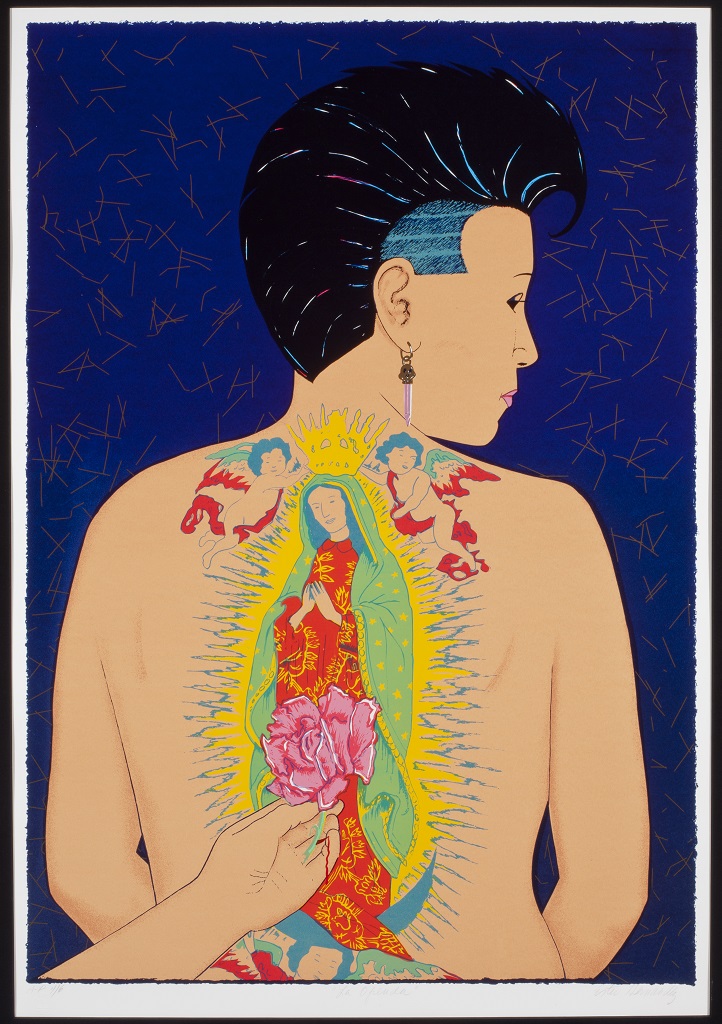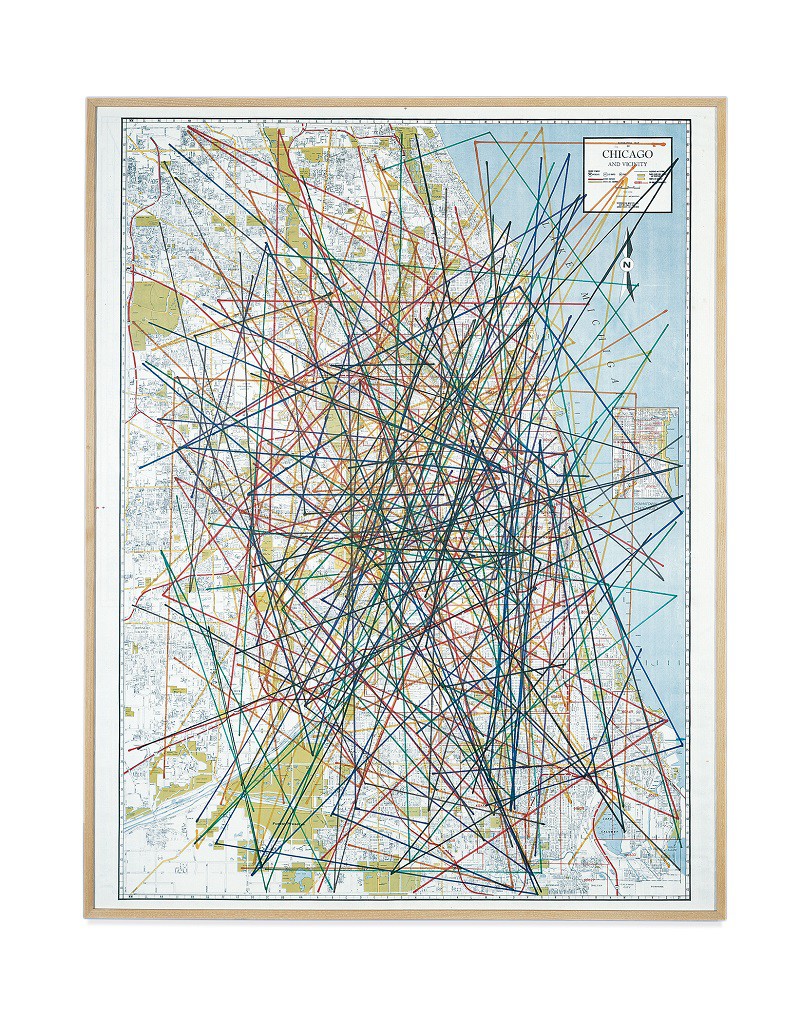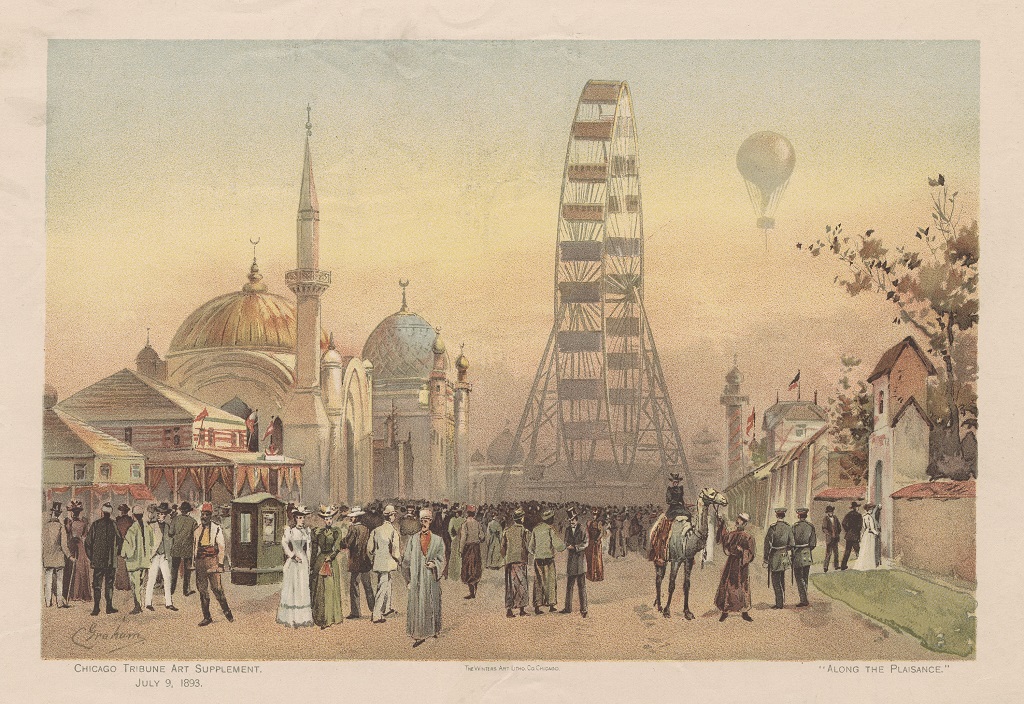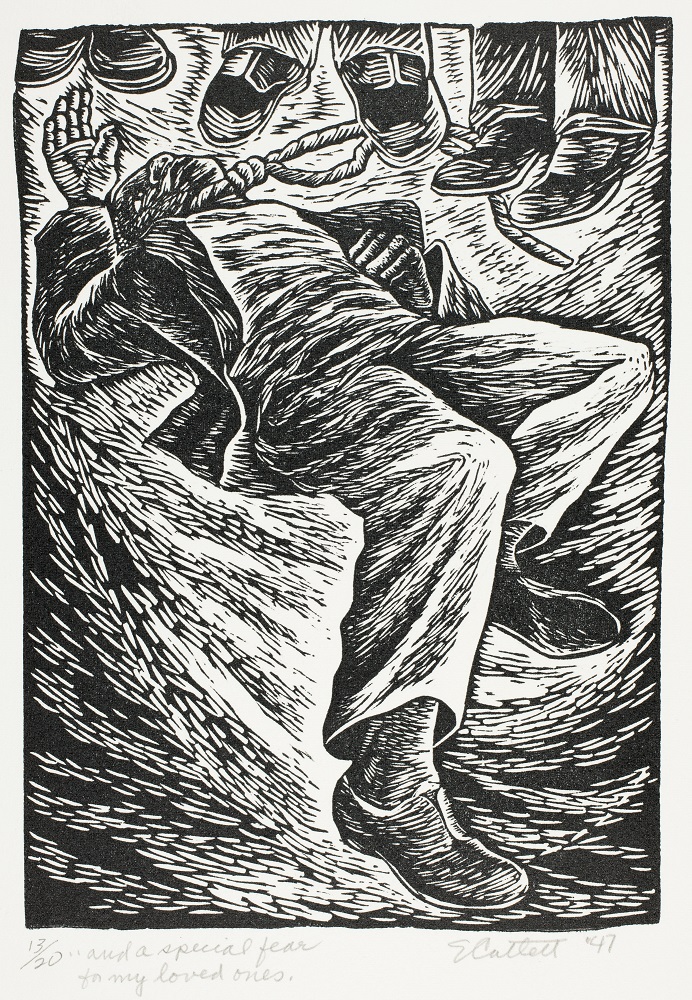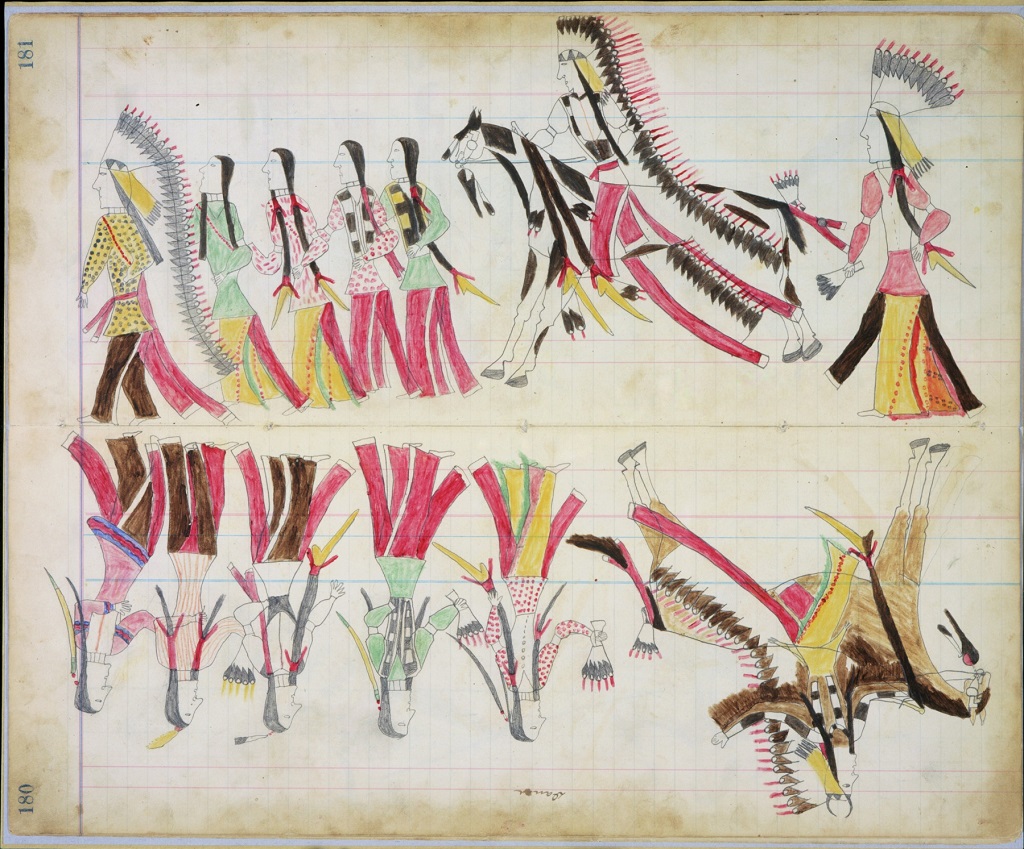Author:
National Museum of Mexican Art Education Department Staff
At First Glance
Describe the figure in this artwork. Who do you think she is? Why might the artist have wanted to create an image of her? Does the image on her body look familiar? Does it remind you of anything? How does the artist use color to draw attention to certain parts of the artwork?
Read to Build Knowledge
Have you ever thought of getting a wild hairstyle or a tattoo? What can something like a hairstyle or a tattoo reveal or express about a person? Artists use these types of details to tell a story. Works of art like this one, that feature a person as the main focus are called portraits. This portrait is a serigraph, a type of print made by pushing ink onto paper through a fine woven mesh screen. Each color is printed separately and artist controls where the colors go by using stencils.
In The Offering, the artist Ester Hernández presents an unusual portrait of a young woman. The first thing you may notice is that the figure is not facing forward, as portrait subjects often do. She also does not have any clothes on. We can observe two additional important details about the subject: her hairstyle and her tattoo. Her hairstyle is uncommon. It is short, shaved on the sides, and fans out wildly over her head. She wears a dagger-shaped earring topped with a small skull on her right ear. The long shape of the earring points to the large tattoo on the woman’s back. The tattoo is of the Virgin of Guadalupe, a beloved religious figure in Mexico and in the Mexican American community in the United States. As you continue to look downward, notice the hand reaching toward the woman from your direction offering a rose to the Virgin’s image.
According to tradition, the Virgin Mary—the mother of Jesus and a very important saint in the Roman Catholic religious tradition—appeared to Juan Diego, a man of Aztec descent who had converted to Christianity. She appeared on December 9, 1531, ten years after the conquest of the Aztec Empire by the Spanish in what is now Mexico. She asked Juan Diego to build a shrine on the spot where she had appeared, Tepeyac Hill, now in a suburb of Mexico City. The Bishop (an important church official in charge of a large area) demanded that Juan Diego provide a sign that would prove the Virgin had really appeared to him before he would agree to build a church on the site. The Virgin appeared to Juan Diego again on December 12 and miraculously showed him where to pick roses, even though it was winter, to take to the Bishop as proof that she had really appeared. Juan Diego collected the roses in his cloak, went before the Bishop, and then opened his cloak to show him the roses. Dozens of roses fell to the floor and his cloak had a beautiful picture of the Virgin inside. The Bishop was stunned by the miracle and ordered that a church be built in her honor on Tepeyac Hill. Since that time, many people in Mexico and beyond have worshiped the Virgin of Guadalupe, as she has come to be called, and her popularity has grown through the centuries.
Throughout Mexican history, the Virgin of Guadalupe has symbolized womanhood. Many Mexican American women grew up observing the importance and influence of the Virgin of Guadalupe to their mothers’ and grandmothers’ lives. Many of these women have embraced the Virgin as a symbol of what it means to be a woman. More recently, some women have begun to see it in a less positive light–as a symbol that reinforces traditional and limited roles for women in society. They challenge Mexican society to re-envision the image of the Virgin as a symbol of contemporary femininity. Hernández is well known for her depictions of Mexican American and Latina women. She incorporates traditional female symbols in her art in order to make the audience view them in new ways. In this print, Hernández reframes the traditional image of the Virgin of Guadalupe in the context of a contemporary young woman, who looks like a member of the punk sub-culture. Punk, which celebrates non-conformity and anti-authority perspectives, can be seen as a form of rebellion. But it also celebrates individuals who show their authentic identity in their style and dress. By showing how an individual could pay tribute to the past and yet be authentically herself, Hernández challenges our ideas of what it means to be female in Mexican American culture today.
In Catholic culture, when people pray they often make offerings in the form of gifts or personal sacrifices to thank the saints that help to grant their prayers. This tattoo could represent the young woman’s gratitude to the Virgin for helping her overcome some unseen hardship. The tattoo itself could be a visible act of thanks and an expression of sacrifice, since the process of getting a tattoo can be very painful. The image of the Virgin could also be seen as this woman’s way of paying tribute to the strength she gained from her Mexican heritage and its relationship to generations of women in the past.
Analyze and Interpret
- How do you think Ester Hernández feels about the woman in her artwork? Why did Hernández focus her portrait on the figure’s back and not on her face?
- Why is a hand shown offering a rose to this woman’s tattoo? Who do you think the hand belongs to?
- What story do you associate with the woman in this print?
- Are there multiple identities represented in this image? How can you tell from the details the artist provides?
- What do you think Hernández wanted to say by making this print? Provide evidence from the image in your answer.
- The title of this print is The Offering. Describe all of the “offerings” that you see in this artwork. Could this artwork itself be an offering?
- Have you taken an object or symbol and changed or personalized it to be your own? How did this change the meaning or function of the original? What did your version of it reveal about you?

